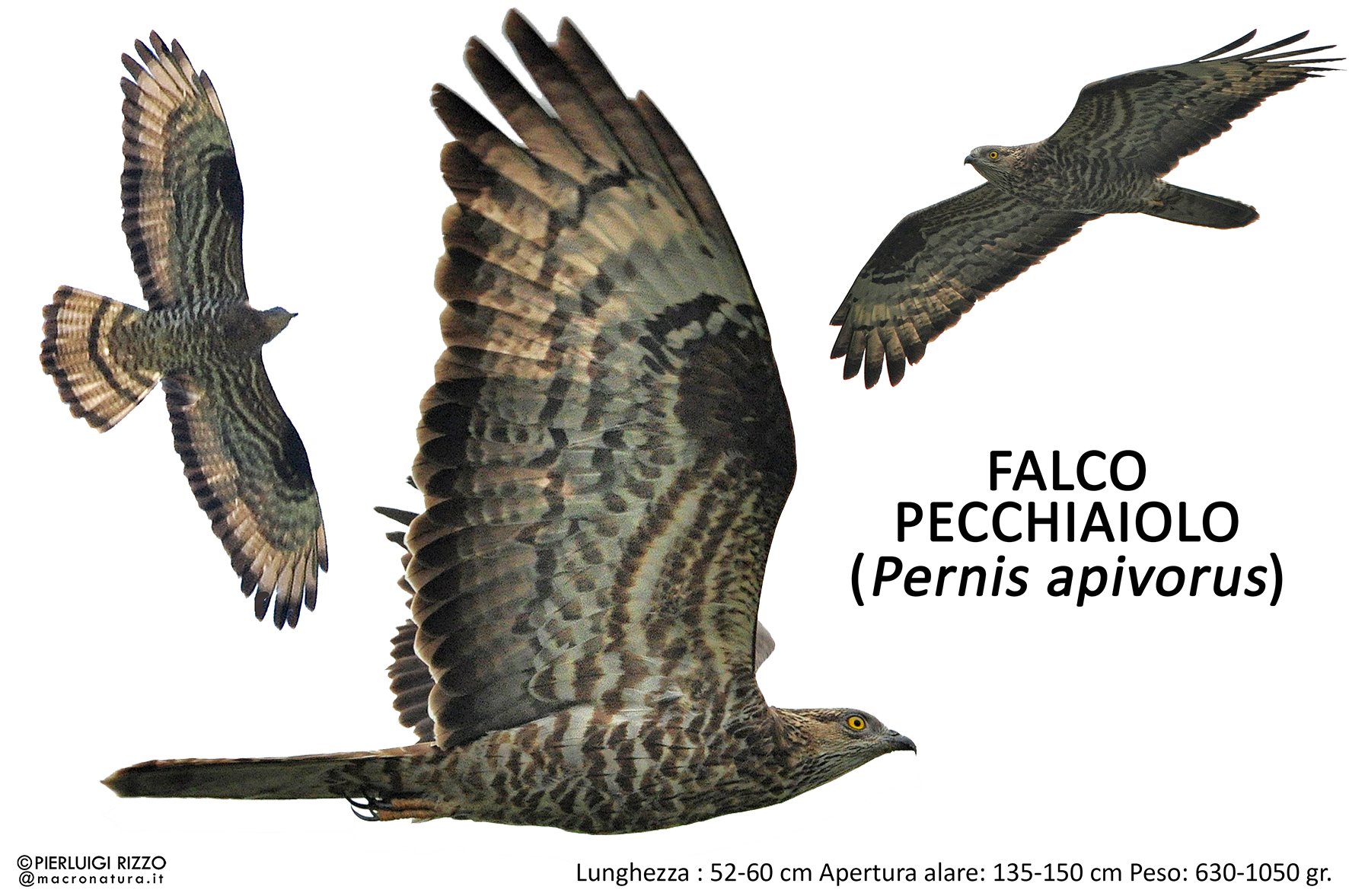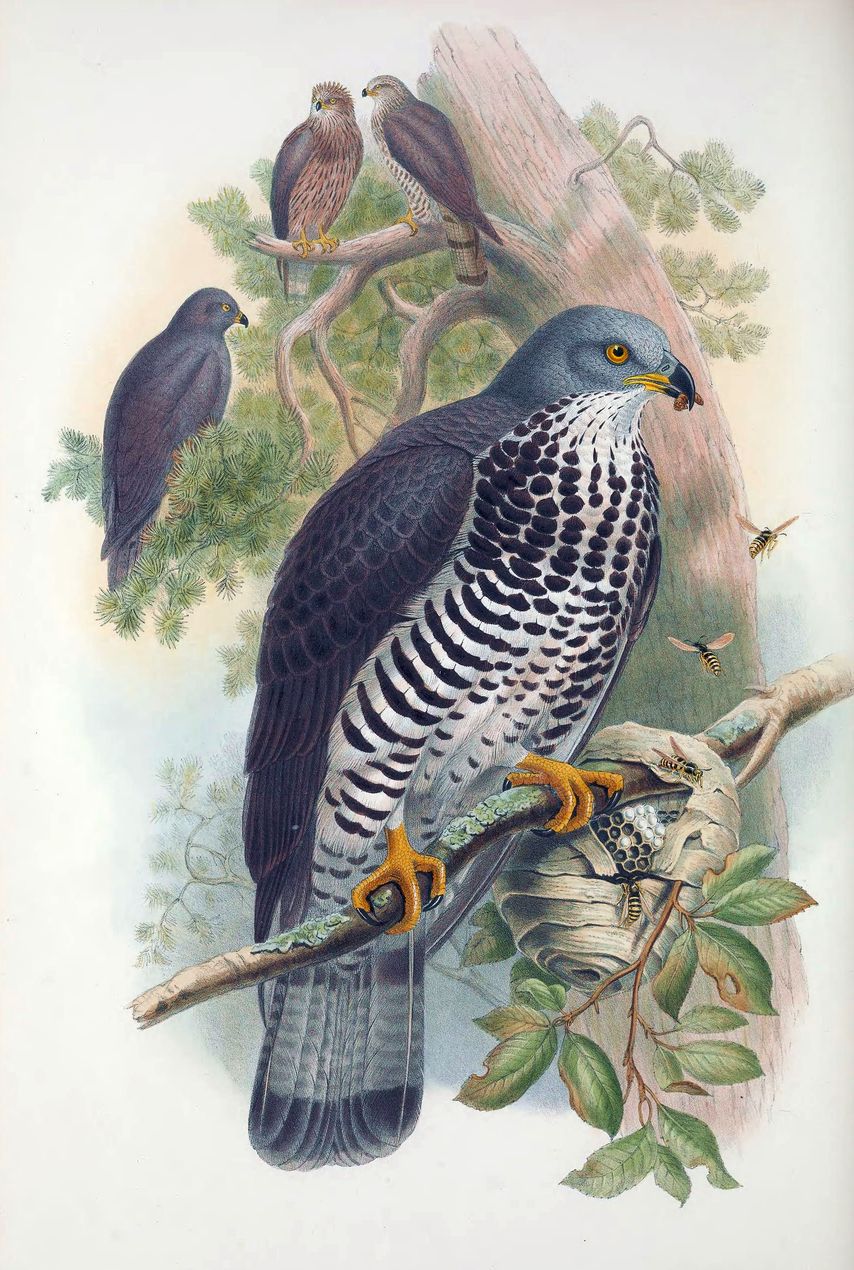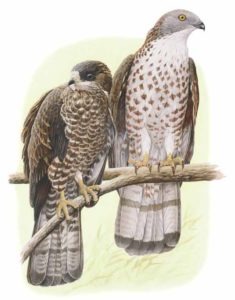It is a medium sized raptor, with a wingspan of 113-135 cm. It can be recognized in flight for its particular silhouette; the head is small and protruding and the tail is elongated. The male has the head ash grey, the upper parts dark and the lower parts light with typical bars. The remiges have black ends and the tail has a thick bar. A peculiar feature of adult individuals is the yellow iris.
The flight is characterized by slow and deep beats with the wing that seems elastic; when it twirls it keeps the wings flat.
The species is migratory and nesting. It reaches the nesting territories in April-May and reproduces until the end of June; the young usually fly away at the end of August. It can be observed in an altitude range from 0 to 1500 meters.
During the spring migration a large number of individuals cross the Strait of Messina; here we can observe an almost continuous passage of honey buzzards for several weeks. Autumn migration is less intense.
It nests in various types of woods with broad-leaved and coniferous trees bordering open environments such as clearings, uncultivated and prairies. The nests are placed on the trees, in correspondence of bifurcations or at the base of big branches. During the nidification the species proves territorial and defends a hunting area of about 10 kmq.
The couples perform in very showy wedding flights during which the wings are beaten over the back in rapid succession. The matings take place near the nest and are repeated several times. Usually there is only one brood between the end of May and the end of June.
This hawk actively hunts nests of social hymenoptera such as wasps, hornets and bees (hence the term honey buzzard); it can expose the underground nests, rasping the ground with its legs, from which it extracts pupae and larvae. The bird is provided with special feathers, similar to scales, around the eyes and at the base of the bill with which it protects itself from the sting of the insects. If the main preys are scarce, it is satisfied of other types of insects such as beetles, grasshoppers and ants as well as of micromammals, reptiles, amphibians, nestlings and eggs of birds.
Once it was subject to strong illegal persecution especially in the Strait of Messina, coinciding with migration. Threats to this species are currently represented by habitat destruction and human disturbance during the reproductive period.
In Europe the species is protected by the 'Birds' directive and is also protected according to Law 157/92.


